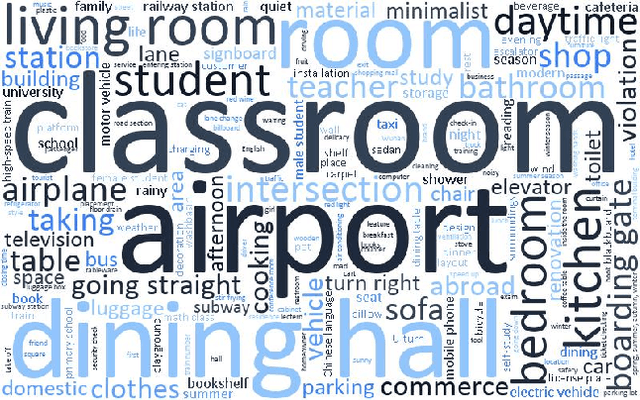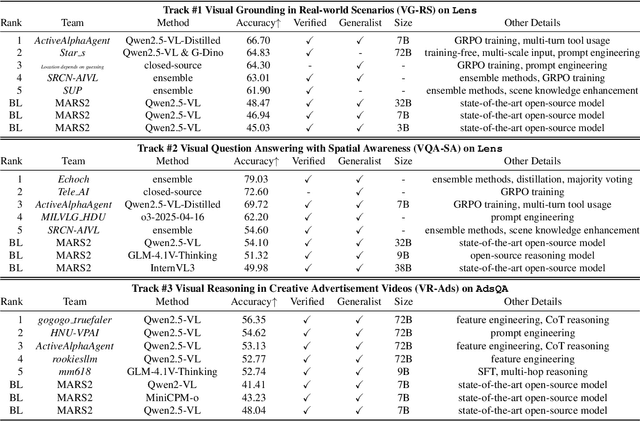Ye Yuan
Charlie
Awakening Facial Emotional Expressions in Human-Robot
Oct 27, 2025Abstract:The facial expression generation capability of humanoid social robots is critical for achieving natural and human-like interactions, playing a vital role in enhancing the fluidity of human-robot interactions and the accuracy of emotional expression. Currently, facial expression generation in humanoid social robots still relies on pre-programmed behavioral patterns, which are manually coded at high human and time costs. To enable humanoid robots to autonomously acquire generalized expressive capabilities, they need to develop the ability to learn human-like expressions through self-training. To address this challenge, we have designed a highly biomimetic robotic face with physical-electronic animated facial units and developed an end-to-end learning framework based on KAN (Kolmogorov-Arnold Network) and attention mechanisms. Unlike previous humanoid social robots, we have also meticulously designed an automated data collection system based on expert strategies of facial motion primitives to construct the dataset. Notably, to the best of our knowledge, this is the first open-source facial dataset for humanoid social robots. Comprehensive evaluations indicate that our approach achieves accurate and diverse facial mimicry across different test subjects.
MARS2 2025 Challenge on Multimodal Reasoning: Datasets, Methods, Results, Discussion, and Outlook
Sep 17, 2025



Abstract:This paper reviews the MARS2 2025 Challenge on Multimodal Reasoning. We aim to bring together different approaches in multimodal machine learning and LLMs via a large benchmark. We hope it better allows researchers to follow the state-of-the-art in this very dynamic area. Meanwhile, a growing number of testbeds have boosted the evolution of general-purpose large language models. Thus, this year's MARS2 focuses on real-world and specialized scenarios to broaden the multimodal reasoning applications of MLLMs. Our organizing team released two tailored datasets Lens and AdsQA as test sets, which support general reasoning in 12 daily scenarios and domain-specific reasoning in advertisement videos, respectively. We evaluated 40+ baselines that include both generalist MLLMs and task-specific models, and opened up three competition tracks, i.e., Visual Grounding in Real-world Scenarios (VG-RS), Visual Question Answering with Spatial Awareness (VQA-SA), and Visual Reasoning in Creative Advertisement Videos (VR-Ads). Finally, 76 teams from the renowned academic and industrial institutions have registered and 40+ valid submissions (out of 1200+) have been included in our ranking lists. Our datasets, code sets (40+ baselines and 15+ participants' methods), and rankings are publicly available on the MARS2 workshop website and our GitHub organization page https://github.com/mars2workshop/, where our updates and announcements of upcoming events will be continuously provided.
HLSMAC: A New StarCraft Multi-Agent Challenge for High-Level Strategic Decision-Making
Sep 16, 2025Abstract:Benchmarks are crucial for assessing multi-agent reinforcement learning (MARL) algorithms. While StarCraft II-related environments have driven significant advances in MARL, existing benchmarks like SMAC focus primarily on micromanagement, limiting comprehensive evaluation of high-level strategic intelligence. To address this, we introduce HLSMAC, a new cooperative MARL benchmark with 12 carefully designed StarCraft II scenarios based on classical stratagems from the Thirty-Six Stratagems. Each scenario corresponds to a specific stratagem and is designed to challenge agents with diverse strategic elements, including tactical maneuvering, timing coordination, and deception, thereby opening up avenues for evaluating high-level strategic decision-making capabilities. We also propose novel metrics across multiple dimensions beyond conventional win rate, such as ability utilization and advancement efficiency, to assess agents' overall performance within the HLSMAC environment. We integrate state-of-the-art MARL algorithms and LLM-based agents with our benchmark and conduct comprehensive experiments. The results demonstrate that HLSMAC serves as a robust testbed for advancing multi-agent strategic decision-making.
Graph-Based Feature Augmentation for Predictive Tasks on Relational Datasets
Aug 28, 2025Abstract:Data has become a foundational asset driving innovation across domains such as finance, healthcare, and e-commerce. In these areas, predictive modeling over relational tables is commonly employed, with increasing emphasis on reducing manual effort through automated machine learning (AutoML) techniques. This raises an interesting question: can feature augmentation itself be automated and identify and utilize task-related relational signals? To address this challenge, we propose an end-to-end automated feature augmentation framework, ReCoGNN, which enhances initial datasets using features extracted from multiple relational tables to support predictive tasks. ReCoGNN first captures semantic dependencies within each table by modeling intra-table attribute relationships, enabling it to partition tables into structured, semantically coherent segments. It then constructs a heterogeneous weighted graph that represents inter-row relationships across all segments. Finally, ReCoGNN leverages message-passing graph neural networks to propagate information through the graph, guiding feature selection and augmenting the original dataset. Extensive experiments conducted on ten real-life and synthetic datasets demonstrate that ReCoGNN consistently outperforms existing methods on both classification and regression tasks.
Prompting Wireless Networks: Reinforced In-Context Learning for Power Control
Jun 06, 2025Abstract:To manage and optimize constantly evolving wireless networks, existing machine learning (ML)- based studies operate as black-box models, leading to increased computational costs during training and a lack of transparency in decision-making, which limits their practical applicability in wireless networks. Motivated by recent advancements in large language model (LLM)-enabled wireless networks, this paper proposes ProWin, a novel framework that leverages reinforced in-context learning to design task-specific demonstration Prompts for Wireless Network optimization, relying on the inference capabilities of LLMs without the need for dedicated model training or finetuning. The task-specific prompts are designed to incorporate natural language descriptions of the task description and formulation, enhancing interpretability and eliminating the need for specialized expertise in network optimization. We further propose a reinforced in-context learning scheme that incorporates a set of advisable examples into task-specific prompts, wherein informative examples capturing historical environment states and decisions are adaptively selected to guide current decision-making. Evaluations on a case study of base station power control showcases that the proposed ProWin outperforms reinforcement learning (RL)-based methods, highlighting the potential for next-generation future wireless network optimization.
Safe: Enhancing Mathematical Reasoning in Large Language Models via Retrospective Step-aware Formal Verification
Jun 05, 2025Abstract:Chain-of-Thought (CoT) prompting has become the de facto method to elicit reasoning capabilities from large language models (LLMs). However, to mitigate hallucinations in CoT that are notoriously difficult to detect, current methods such as process reward models (PRMs) or self-consistency operate as opaque boxes and do not provide checkable evidence for their judgments, possibly limiting their effectiveness. To address this issue, we draw inspiration from the idea that "the gold standard for supporting a mathematical claim is to provide a proof". We propose a retrospective, step-aware formal verification framework $Safe$. Rather than assigning arbitrary scores, we strive to articulate mathematical claims in formal mathematical language Lean 4 at each reasoning step and provide formal proofs to identify hallucinations. We evaluate our framework $Safe$ across multiple language models and various mathematical datasets, demonstrating a significant performance improvement while offering interpretable and verifiable evidence. We also propose $FormalStep$ as a benchmark for step correctness theorem proving with $30,809$ formal statements. To the best of our knowledge, our work represents the first endeavor to utilize formal mathematical language Lean 4 for verifying natural language content generated by LLMs, aligning with the reason why formal mathematical languages were created in the first place: to provide a robust foundation for hallucination-prone human-written proofs.
AdaHuman: Animatable Detailed 3D Human Generation with Compositional Multiview Diffusion
May 30, 2025



Abstract:Existing methods for image-to-3D avatar generation struggle to produce highly detailed, animation-ready avatars suitable for real-world applications. We introduce AdaHuman, a novel framework that generates high-fidelity animatable 3D avatars from a single in-the-wild image. AdaHuman incorporates two key innovations: (1) A pose-conditioned 3D joint diffusion model that synthesizes consistent multi-view images in arbitrary poses alongside corresponding 3D Gaussian Splats (3DGS) reconstruction at each diffusion step; (2) A compositional 3DGS refinement module that enhances the details of local body parts through image-to-image refinement and seamlessly integrates them using a novel crop-aware camera ray map, producing a cohesive detailed 3D avatar. These components allow AdaHuman to generate highly realistic standardized A-pose avatars with minimal self-occlusion, enabling rigging and animation with any input motion. Extensive evaluation on public benchmarks and in-the-wild images demonstrates that AdaHuman significantly outperforms state-of-the-art methods in both avatar reconstruction and reposing. Code and models will be publicly available for research purposes.
GeoMan: Temporally Consistent Human Geometry Estimation using Image-to-Video Diffusion
May 29, 2025Abstract:Estimating accurate and temporally consistent 3D human geometry from videos is a challenging problem in computer vision. Existing methods, primarily optimized for single images, often suffer from temporal inconsistencies and fail to capture fine-grained dynamic details. To address these limitations, we present GeoMan, a novel architecture designed to produce accurate and temporally consistent depth and normal estimations from monocular human videos. GeoMan addresses two key challenges: the scarcity of high-quality 4D training data and the need for metric depth estimation to accurately model human size. To overcome the first challenge, GeoMan employs an image-based model to estimate depth and normals for the first frame of a video, which then conditions a video diffusion model, reframing video geometry estimation task as an image-to-video generation problem. This design offloads the heavy lifting of geometric estimation to the image model and simplifies the video model's role to focus on intricate details while using priors learned from large-scale video datasets. Consequently, GeoMan improves temporal consistency and generalizability while requiring minimal 4D training data. To address the challenge of accurate human size estimation, we introduce a root-relative depth representation that retains critical human-scale details and is easier to be estimated from monocular inputs, overcoming the limitations of traditional affine-invariant and metric depth representations. GeoMan achieves state-of-the-art performance in both qualitative and quantitative evaluations, demonstrating its effectiveness in overcoming longstanding challenges in 3D human geometry estimation from videos.
Understanding 6G through Language Models: A Case Study on LLM-aided Structured Entity Extraction in Telecom Domain
May 20, 2025Abstract:Knowledge understanding is a foundational part of envisioned 6G networks to advance network intelligence and AI-native network architectures. In this paradigm, information extraction plays a pivotal role in transforming fragmented telecom knowledge into well-structured formats, empowering diverse AI models to better understand network terminologies. This work proposes a novel language model-based information extraction technique, aiming to extract structured entities from the telecom context. The proposed telecom structured entity extraction (TeleSEE) technique applies a token-efficient representation method to predict entity types and attribute keys, aiming to save the number of output tokens and improve prediction accuracy. Meanwhile, TeleSEE involves a hierarchical parallel decoding method, improving the standard encoder-decoder architecture by integrating additional prompting and decoding strategies into entity extraction tasks. In addition, to better evaluate the performance of the proposed technique in the telecom domain, we further designed a dataset named 6GTech, including 2390 sentences and 23747 words from more than 100 6G-related technical publications. Finally, the experiment shows that the proposed TeleSEE method achieves higher accuracy than other baseline techniques, and also presents 5 to 9 times higher sample processing speed.
Emergent Active Perception and Dexterity of Simulated Humanoids from Visual Reinforcement Learning
May 18, 2025Abstract:Human behavior is fundamentally shaped by visual perception -- our ability to interact with the world depends on actively gathering relevant information and adapting our movements accordingly. Behaviors like searching for objects, reaching, and hand-eye coordination naturally emerge from the structure of our sensory system. Inspired by these principles, we introduce Perceptive Dexterous Control (PDC), a framework for vision-driven dexterous whole-body control with simulated humanoids. PDC operates solely on egocentric vision for task specification, enabling object search, target placement, and skill selection through visual cues, without relying on privileged state information (e.g., 3D object positions and geometries). This perception-as-interface paradigm enables learning a single policy to perform multiple household tasks, including reaching, grasping, placing, and articulated object manipulation. We also show that training from scratch with reinforcement learning can produce emergent behaviors such as active search. These results demonstrate how vision-driven control and complex tasks induce human-like behaviors and can serve as the key ingredients in closing the perception-action loop for animation, robotics, and embodied AI.
 Add to Chrome
Add to Chrome Add to Firefox
Add to Firefox Add to Edge
Add to Edge